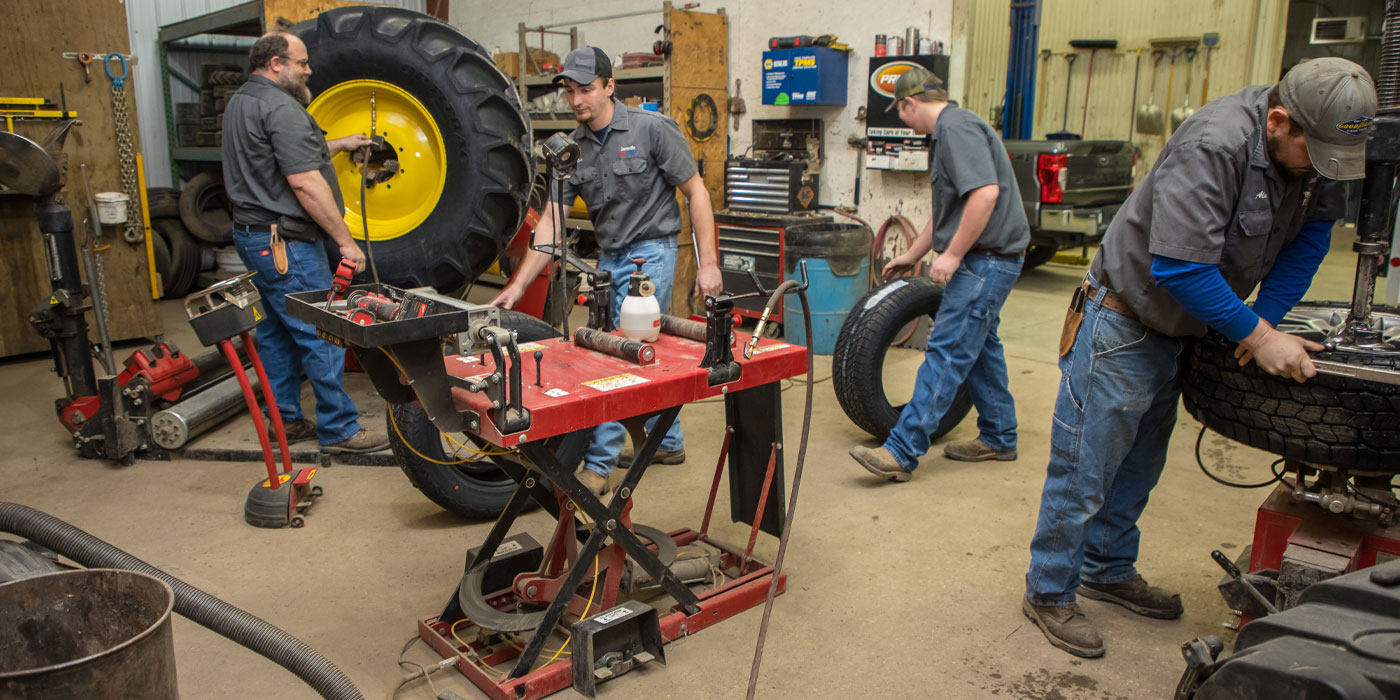Get Road-Ready with Professional GMC Tires Service at Morris Tires
Get Road-Ready with Professional GMC Tires Service at Morris Tires
Blog Article
Tire Solution: The Impact of Climate Condition
When it comes to guaranteeing optimal performance and safety and security on the roadway, understanding the impact of climate problems on tire service is important. GMC Tire Service. In this discussion, we will explore the detailed partnership between weather condition conditions and tire solution, dropping light on the value of weather-specific tire upkeep practices and factors to consider.
Warm and Tire Performance
When exposed to high temperatures, tires experience adjustments in performance that can substantially affect car safety and security and handling. The heat produced from long term driving or heat conditions triggers the tire rubber to soften, causing decreased tread life and boosted wear. As the rubber comes to be softer, the tire's grip when driving reduces, influencing stopping distances and total traction. In severe situations, excessive warmth can also create tire blowouts, posturing an extreme safety and security threat to the car and its passengers.

Cold Weather Impacts
Cold weather condition conditions can have a significant impact on tire performance and safety and security. In cold weather, tires might additionally shed air stress a lot more rapidly, which can impact handling and fuel efficiency.
To alleviate the impacts of winter on tires, it is critical to regularly check tire pressure and inflate them to the producer's recommended levels. Utilizing wintertime or all-season tires made for chilly weather condition problems can additionally boost grip and grip on icy or snowy roadways. Appropriate tire maintenance, including regular examinations for wear and damage, becomes much more crucial during colder months to ensure ideal performance and safety and security.
Rainy Conditions Influence
During rainy conditions, tire performance and safety can be dramatically affected by the damp road surface areas and lowered presence. The tread pattern of tires plays an essential duty in preserving traction on wet roadways. Tires with damaged footsteps are more vulnerable to hydroplaning, where a layer of water builds up between the roadway and the tire surface, resulting in loss of traction. To fight this, drivers should consistently check their tires for adequate walk depth and think about investing in tires specifically created for wet problems.
Moreover, wet climate can also decrease visibility, making it testing for motorists to see the road ahead plainly (GMC Tire Service). In such conditions, it is necessary to readjust driving speeds as necessary and preserve a risk-free following distance to enable for sudden stops. Appropriately filled with air tires can likewise help in maintaining control on damp roads by giving better handling and hold
Snow and Tire Safety
Snow-covered roads present special difficulties for vehicle drivers, highlighting the value of appropriate tire option and maintenance. When driving in snowy problems, having the appropriate tires can make a considerable difference in safety and efficiency. Wintertime tires are created with special rubber substances and walk patterns to give far better traction on snow and ice contrasted to all-season tires. The much deeper treads and sipes of winter season tires assist hold the roadway much better, decreasing the threat of slipping and moving.

It is important to comply with manufacturer instructions when utilizing and mounting tire chains to stop damage to the tires and vehicle. By choosing the best tires, keeping appropriate rising cost of living, and thinking about additional grip aids like tire chains, chauffeurs can improve their safety when browsing snow-covered roadways.
Weather-Related Tire Upkeep
Weather-related tire Continued maintenance includes a variety of techniques intended at ensuring optimal tire feature and durability in various weather condition situations. One key facet of weather-related tire upkeep is tire stress law. Examining tire walk routinely and replacing tires when walk wear gets to a specific depth is vital for maintaining grip and security in adverse climate.
Conclusion
To conclude, climate problems have a considerable impact on tire efficiency and safety and security. From warmth affecting tire stress and morris tires put on to winter minimizing grip, it is necessary to think about the weather condition when preserving and utilizing tires. Stormy problems can reduce grip and lead to hydroplaning, while snow can enhance the risk of accidents if tires are not correctly furnished. Weather-related tire maintenance is critical in making sure ideal efficiency and safety on the roads.
In this conversation, we will certainly check out the elaborate partnership in between climate conditions and tire service, losing light on the significance of weather-specific tire upkeep methods and considerations.

Report this page